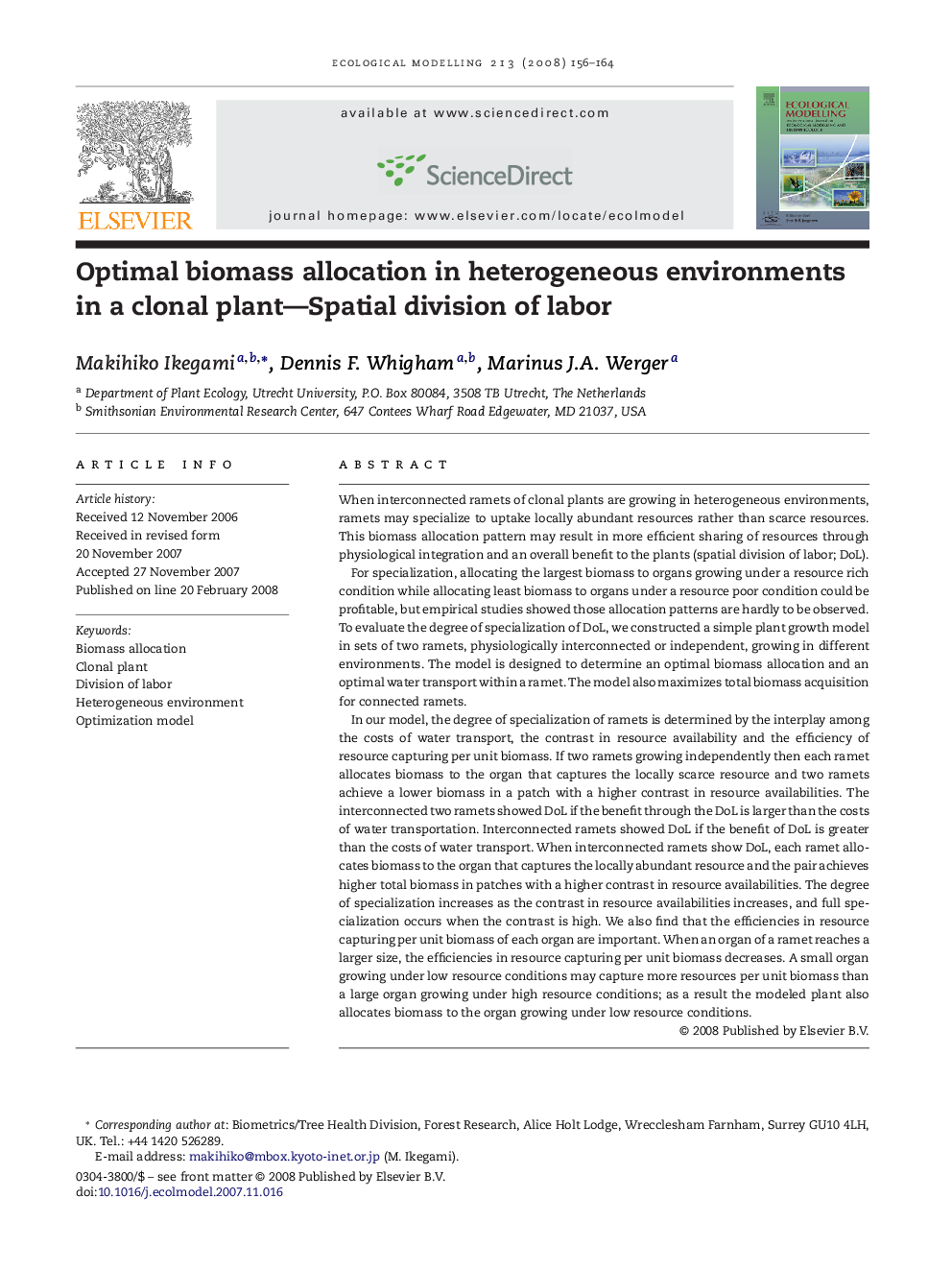| Article ID | Journal | Published Year | Pages | File Type |
|---|---|---|---|---|
| 4378240 | Ecological Modelling | 2008 | 9 Pages |
Abstract
In our model, the degree of specialization of ramets is determined by the interplay among the costs of water transport, the contrast in resource availability and the efficiency of resource capturing per unit biomass. If two ramets growing independently then each ramet allocates biomass to the organ that captures the locally scarce resource and two ramets achieve a lower biomass in a patch with a higher contrast in resource availabilities. The interconnected two ramets showed DoL if the benefit through the DoL is larger than the costs of water transportation. Interconnected ramets showed DoL if the benefit of DoL is greater than the costs of water transport. When interconnected ramets show DoL, each ramet allocates biomass to the organ that captures the locally abundant resource and the pair achieves higher total biomass in patches with a higher contrast in resource availabilities. The degree of specialization increases as the contrast in resource availabilities increases, and full specialization occurs when the contrast is high. We also find that the efficiencies in resource capturing per unit biomass of each organ are important. When an organ of a ramet reaches a larger size, the efficiencies in resource capturing per unit biomass decreases. A small organ growing under low resource conditions may capture more resources per unit biomass than a large organ growing under high resource conditions; as a result the modeled plant also allocates biomass to the organ growing under low resource conditions.
Related Topics
Life Sciences
Agricultural and Biological Sciences
Ecology, Evolution, Behavior and Systematics
Authors
Makihiko Ikegami, Dennis F. Whigham, Marinus J.A. Werger,
